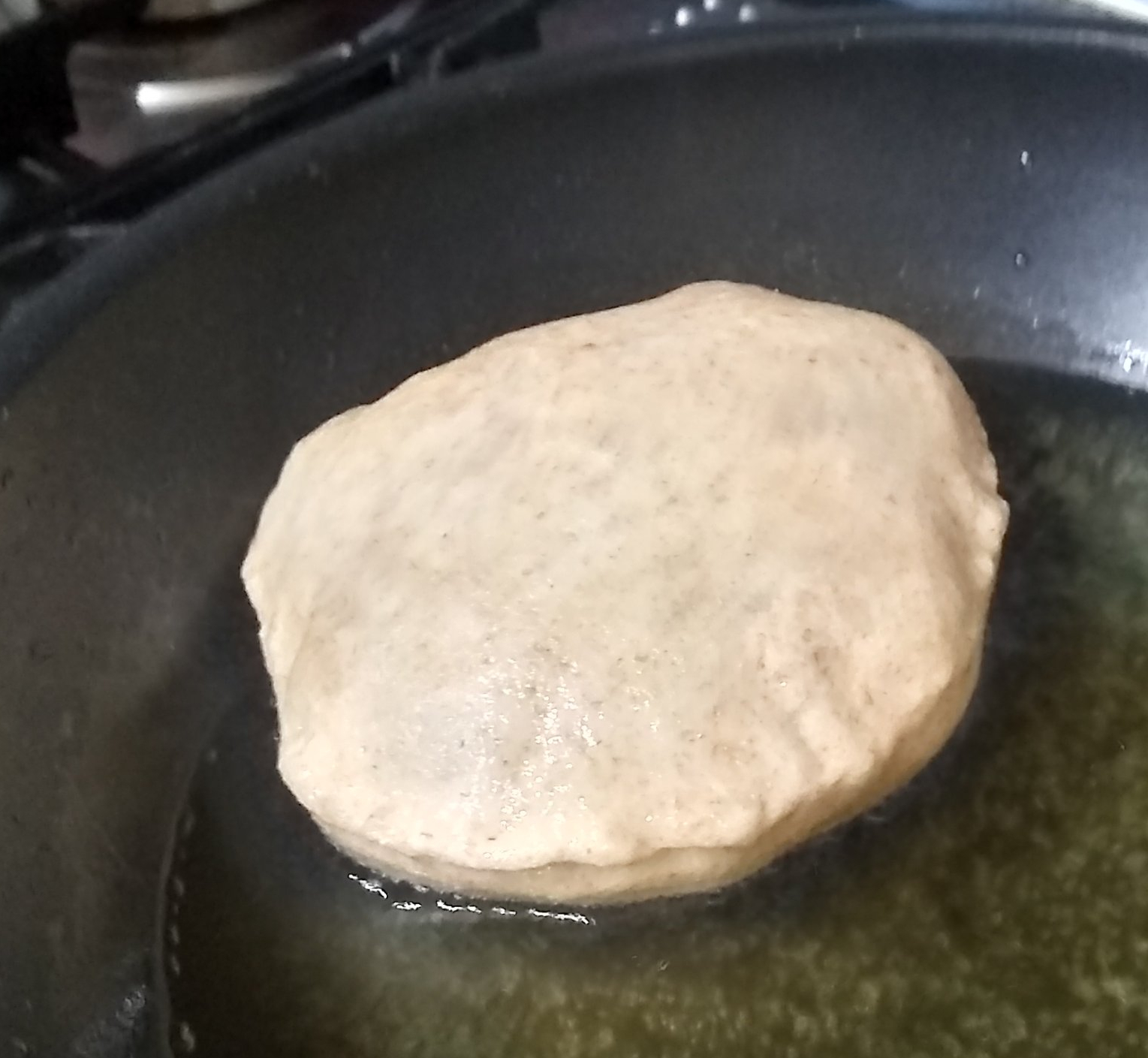
As always, this is designed to be a recipe that works easily. Puris should be unleavened but I haven’t developed the knack and I hear that most people use some form of raising agent, yeast or baking powder. I am irritated by recipes which suggest that the unleavened dough will just magically puff up in the hot oil, when I think in reality this requires a lot of practice. Neither you nor I are likely to ever spend huge amounts of time in a temple kitchen, learning to perfect puris. I also feel a level of reluctance to invest lots of time making them at home, for the sake of my arteries. These should be really called luchi but we always just called them puris.
I remember lurking outside the temple kitchen with the other kids, waiting to get our hands on some fresh puris and potato subji, after having been swimming in the lake. Now my husband asks me to make them for special occasions to go with a paneer subji.
You can make these with chapati flour, a mix of wholemeal and plain flour or with plain flour. You will also need a slightly concave spoon (metal or plastic) with slots or holes in it.
Makes 6 medium sized puris
Ingredients
125g flour
10ml oil
3.75g instant yeast (or three 1/4 teaspoons which are each 1.25g)
80ml warm water
A pinch of salt
A litre of oil, for frying
1. Rub the oil into the flour, to give it a breadcrumb-like consistency.
2. Add the yeast and salt before adding the warm water. Add the water gradually as you may not need it all – the dough should be soft but not enough to leave a big sticky mess on your hands. (Conversely, add a little more water if needed. The dough can be thirstier sometimes than others, especially if your dough contains wholemeal flour.) Knead until the dough becomes smoother in feel and appearance.
3. Cover the dough in a bowl with a damp tea towel and leave to rise in a warm place for an hour. Divide the dough into six evenly sized pieces and roll into balls.
4. Pour a litre of oil into a wok and heat over a high heat. You can roll your puris while the oil heats up (see point 5 below), then line a colander with kitchen roll. Sit it on a plate and keep it near the hob to put the hot puris in. When the oil is ready, you will see lots of little bubbles rising, like a glass of sparkling water.
5. On an oiled surface, roll each ball of dough out into a circle, four inches in diameter. Fry the puris one at a time, gently placing into the hot oil. It will sink, then rise. As soon as it reaches the surface, press it down gently with the spoon and it will start to puff up. Ideally it should inflate like a balloon (see photo above) but this doesn’t always happen. They are still very nice, even if they don’t neatly balloon up. I do however find that the first one in a batch is a bit of a dud. (Last time I made them, I rolled the puris and left them to sit under a damp tea towel. I knocked two by accident and had to re-roll them. They puffed up perfectly – you can give this a go if need be.)
6. Put each fried puri into the colander lined with kitchen roll. You can put a tea towel over them to keep the warm while you fry the rest. You can also wrap them in tinfoil and keep them warm in an oven set to 50C. Serve with mattar paneer or chana masala & halava, a classic north Indian combination. You can also dust them with icing sugar and serve them with shrikhand.